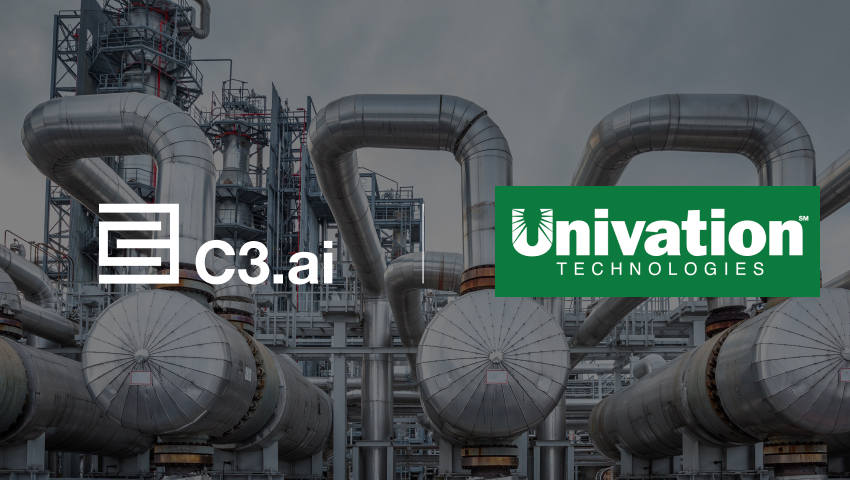The rapid growth of hardware investments in smart grid opens up a new opportunity for utilities to take advantage of next-generation information technology‚ such as cloud computing‚ to fully unlock the insights and value that a modern grid has to offer. However‚ outdated state rate regulations and accounting rules‚ have not kept pace with‚ and actually impede‚ the ability of utilities to benefit from the new IT models that will substantially improve system performance‚ reduce capital and operating costs and hardware risk‚ and produce substantial economic value to utility customers and shareholders. Under current guidelines‚ utilities may classify investments in legacy hardware and supporting on-premise software as a capital expense‚ which can be included as part of the rate on which it can receive a return. Counterintuitively‚ if a utility wants to invest in state-of-the-art cloud-based technologies that both enhance the performance of legacy and new hardware systems and that eliminate the need for continual procurement of more expensive new IT hardware‚ a utility typically must treat the investment as an operating expense for which it does not receive a rate of return. This difference in treatment creates a perverse incentive to pursue more costly‚ less effective‚ and riskier on-premise technology investments and deprives rate payers of the immense performance and economic benefits of the more advanced technology innovations that many other sectors are now experiencing. A simple update of rate regulation and accounting rules can fix this problem.
This decade‚ utilities are investing billions of dollars to make the devices in the power grid remotely IP-addressable‚ including‚ for example‚ the nearly 1.1 billion smart meters that will be installed by 2022‚ according to Navigant Research. While representing only a fraction of the sensored devices on the grid‚ the number of smart meters provides a good indication of the growth rate of the smart grid.
All of these hardware advances‚ however‚ are of limited usefulness without the cloud-based software innovations that will actually make the smart grid ‘smart.’ As the grid increasingly becomes sensored‚ an unprecedented amount of data are produced‚ which can only be addressed using the most state-of-the-art information technology. IT offerings have rapidly evolved to today’s innovative cloud computing models‚ including Software as a Service‚ Platform as a Service‚ and Infrastructure as a Service. With these‚ come opportunities to leverage numerous capabilities essential to fulfilling the promise of the smart grid – continuous access to increased processing speeds and power‚ more flexibility and mobility‚ elasticity/on-demand surge capacity‚ and lower costs through scale.
However‚ the U.S. regulatory and accounting treatment of cloud computing models has not kept pace to take advantage of this technology opportunity‚ and utilities are faced with undue consequences when they select a cloud computing offering because cloud computing and on-premise software solutions are treated quite differently. The existing guidelines are based on 20-year-old business models‚ which classify last-generation on-premise software licenses as a capital expense‚ and modern cloud computing arrangements as an operating expense. The classification as a capital versus operating expense influences a utility’s ability to obtain rate-base coverage consistent with other capital expenditures and incentivizes investments in antiquated technology.
In order to accelerate the goal of a modern electric transmission and distribution system‚ advanced cloud-based IT offerings are necessary. Regulation should respond to remove illogical barriers and provide the same incentive to deploy cost-saving‚ highperforming software systems that a utility already receives for investing in other technologies or smarter equipment.
On-Premise Software
The traditional software model provides a physical copy of the product on-premise under a license agreement. The license allows the vendor to restrict use of the software‚ for example by limiting access to a certain number of users or installation to a certain number of servers‚ and preventing reverse engineering.
These licenses are typically structured as ‘perpetual’ or ‘term’ arrangements. A perpetual license is a right to use software for an unlimited period of time – it is paid for once and does not have to be renewed. A term license is a right to use software for a specified period of time and requires renewal of the license at the end of the term for continued use.
Both perpetual and term licenses typically include an annual maintenance arrangement to support updates‚ ongoing customer service‚ and other incidental activities‚ but the responsibility for the application upgrades‚ patching‚ administration‚ and hardware infrastructure operation and management is left to the utility. The distinguishing feature for utility IT teams is that the software vendor grants the use of a copy of the software under the license arrangement‚ but the teams must manage the operation of the software.
Cloud Computing
Over the last decade‚ a rapidly growing number of companies have shifted from buying these on-premise software components under perpetual or term licenses‚ to leveraging software built‚ managed‚ and continually improved by someone else. These companies are replacing traditional on-premise software applications and platforms – even underlying IT infrastructures – with the same kind of cloud-based solutions‚ or cloud computing. Cloud computing refers to the use of Internet-based computing to deliver a variety of product offerings. Under cloud computing arrangements‚ the customer has a right to use or benefit from the functionality of software but does not receive a copy of it. These arrangements are typically structured under subscription models.
Under a subscription‚ the software vendor agrees to deliver one or more of its software products at the time of contract‚ and unspecified additional software updates during the term of the subscription. A subscription differs from a perpetual or term license in that it provides customers with a turnkey solution that includes application management‚ monitoring‚ patching‚ and upgrades as well as hardware infrastructure and operations. While these software applications can provide similar solutions to on-premise software‚ they have the added enhancements and benefits of the mobility‚ scalability‚ and elasticity of the cloud.
The most common cloud computing models for utilities are Software as a Service (SaaS)‚ Platform as a Service (PaaS)‚ and Infrastructure as a Service (laaS). With a Saas model‚ utilities pay to use an Internet-based software product hosted by the Saas solution provider. Saas solutions used commonly by utilities today include applications such as C3 Energy for smart grid analytics‚ Esri ArcGIS for geographic information systems‚ and SmartGridCIS for billing and customer information systems. Typically‚ Saas solutions are service-based‚ scalable and elastic‚ and metered by use. By 2016‚ IDC estimates that Saas solutions will constitute about 14.2 percent of all software spending and 18 percent of all applications spending‚ with a compound annual growth rate of 21.3 percent.
PaaS models are more commonly used by developers. With these solutions‚ utilities pay to use a web-based platform hosted by a software vendor or a third party to design‚ develop‚ and test their own applications. The most common examples of PaaS solutions in use today include Salesforce.com and Microsoft Azure. Specific to big data and the energy market‚ C3 Energy’s data analytics platform has also been designed as a PaaS solution.
Finally‚ laaS allows utilities to pay to use a virtualized service environment such as computers‚ systems‚ hardware‚ network bandwidth‚ etc. maintained by a vendor. Utilities can rent (rather than own their own) servers or operating systems to run their choice of software solutions. According to a KMPG analysis‚ implementation of laaS can save 30 to 60 percent of IT infrastructure costs. Amazon Web Services is the current leader in this area.
In each of these models‚ the solutions are basically rented by a utility instead of purchased outright. This allows utilities access to the latest advances in technology‚ mobility‚ elasticity‚ and scalability to realize operational efficiencies. Without having to invest in hardware and software to meet their maximum requirements upfront. For example‚ utilities can increase capacity on-demand to meet specific timelines and requirements and then scale back as appropriate. However‚ regulation has not kept apace‚ and despite the efficiencies available‚ utilities are disincentivized to invest in these solutions and are conversely motivated to continue with obsolete technology investments.
Accounting for the Cost of Cloud Computing
Currently‚ U.S. generally accepted accounting principles (GAAP) do not have specific guidance that addresses accounting for cloud computing arrangements‚ so utility regulators have no clear roadmap. This results in differing representations of on-premise and cloud computing arrangements in financial statements.
With no explicit guidance‚ utilities are following 20-year-old business and technology models‚ with the following disparate result:
- Perpetual software license: Capital expense
- Saas license: Operational expense
- Term License: Operational or capital expense‚ depending on the arrangement
- One-off treatment as an approved regulatory asset: Capital expense
These differences in accounting classifications are inconsistent‚ given the similarities of the solutions. Both arrangements are similar in:
- the rights conveyed and restrictions imposed;
- the benefits derived;
- the nature of the arrangements whereby a customer is granted the right to use software over a specified time; and
- the maintenance‚ upgrades‚ enhancements and support often included in both types of contracts.
On-premise license arrangements treated as a capital expenditure are recognized as intangible assets at inception of the arrangement and amortized over the life of the arrangement. Cloud computing arrangements are accounted for as executory contracts by a majority of utilities and recognized as operating expenses over the term of the arrangement. The resulting difference in accounting treatment is prohibiting utilities and their customers to access the added benefits and technology innovation inherent in cloud computing.
If a utility licenses software in conjunction with investment in operating equipment (meters‚ substations‚ sensoring on distribution system‚ etc.)‚ then both the hardware and software investments are typically capitalized as a bundle. For example‚ if a utility purchases smart meters that have an analytics layer bundled into it both the hardware and software are categorized as a capital expense. However‚ if a utility wants to license software that improves performance of existing operating equipment‚ independently of a hardware purchase‚ than the utility must go through a non-optimal path to achieve capital treatment of the software investment.
In addition‚ an on-premise software license model also requires a significant capital investment in IT hardware (servers‚ storage‚ etc.)‚ which rapidly becomes obsolete‚ but in the Saas model the acquisition of IT hardware is not necessary as it is bundled in the Saas model‚ and can take advantage of continuous advances and investments in higher performing IT hardware owned and managed by cloud service providers.
Solutions
The work-around for some utilities wishing to capitalize Saas arrangements has been to characterize the arrangement as a term license and justify capital treatment by analogy‚ using capital lease rules. This approach is not as clear as it would be for a perpetual license‚ and in many cases not optimal for the utility.
Instead of utilities being burdened with confusion and inconsistencies on their balance sheets‚ rate regulations should catch up with software innovations in order to accelerate the goal of a modern transmission and distribution system. Regulators must understand the issue at stake and create regulations that support utilities in ways that deliver even greater benefits to their customers.
Utilities should not be penalized or discouraged from investing in technology advancements. Instead‚ utilities should be leading the way to a more modernized electric system. In order to do so‚ they need simple clarifications on rate recovery rules on a national or state by-state basis to support a model rule for capital treatment of cloud computing solutions.
To move forward‚ utility regulator agencies and GAAP should recognize Saas license arrangements as a capital expenditure rather than an operating expense. This change would accelerate the adoption curve and accessibility of today’s innovative computing models and unlock the scalability‚ elasticity‚ performance power‚ integration speeds‚ and cost benefits for utilities and their customers. The classification of Saas as a capital expense would also reduce the current‚ unnecessary barriers towards technology advancement in the utility industry‚ which is an essential step in the transformation to a smarter‚ more efficient‚ and more sustainable energy system.



